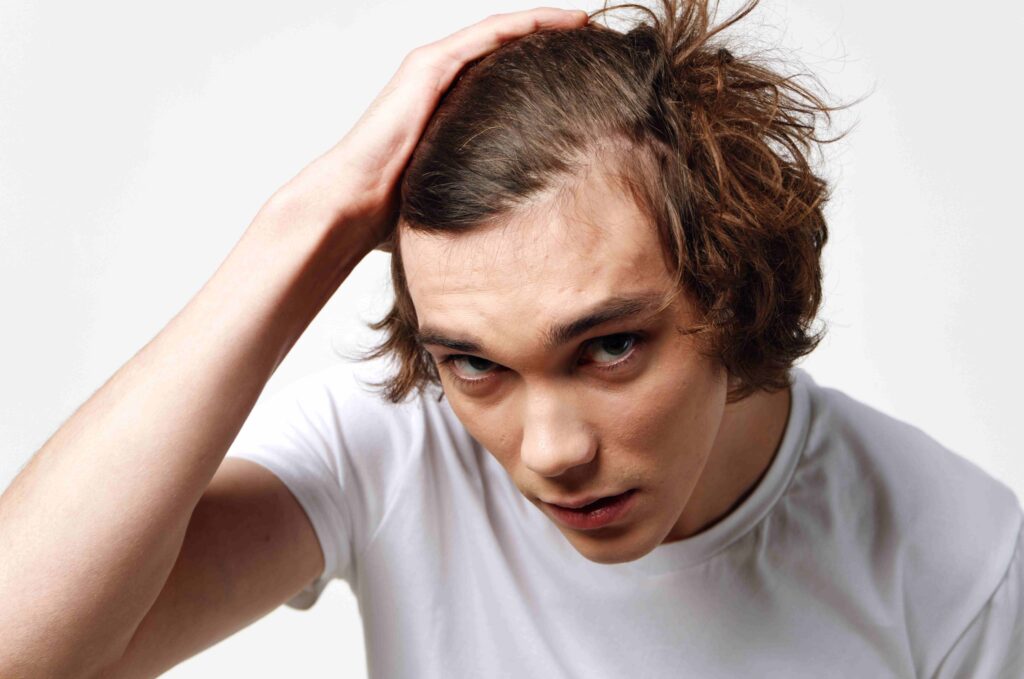
Experiencing hair loss at an early age can be disheartening and often leads to a dip in self-confidence. While various treatments are available, Platelet-Rich Plasma (PRP) therapy is gaining popularity for its natural, minimally invasive approach to stimulating hair growth. In this guide, we’ll explore how PRP treatment works, its benefits for early-age hair loss, and why it’s an ideal option for those seeking an effective, non-surgical solution.
1. Understanding Early Age Hair Loss
Hair loss isn’t exclusive to older adults; many young people experience thinning hair or even bald spots in their teens or twenties. Some common causes of early-age hair loss include:
- Genetics: Family history often plays a significant role in early hair loss patterns.
- Hormonal Imbalances: Conditions such as polycystic ovary syndrome (PCOS) or thyroid disorders can disrupt hair growth.
- Stress and Lifestyle: High levels of stress, unhealthy diets, and poor sleep can impact hair health.
- Nutritional Deficiencies: Lack of essential nutrients like iron, vitamin D, and biotin can lead to weaker hair and hair fall.
Early intervention is crucial to managing and reversing hair loss. PRP therapy offers an innovative and effective way to target these issues at the root level, promoting natural hair regrowth without invasive procedures.
2. What Is PRP Treatment for Hair Loss?
PRP therapy uses the healing properties of your blood to stimulate hair growth. Here’s how it works:
- Blood Collection: A small sample of blood is drawn from your arm.
- Platelet Separation: The blood sample is then processed in a centrifuge to separate the platelet-rich plasma, which is rich in growth factors.
- Scalp Injection: The PRP is injected into areas of the scalp with thinning hair. These growth factors encourage hair follicles to strengthen and regenerate.
This natural approach helps stimulate inactive or weakened hair follicles, making it an ideal choice for those looking to improve hair thickness and growth without harsh chemicals or surgery.
3. Benefits of PRP Treatment for Early Age Hair Loss
PRP treatment is a versatile, minimally invasive option that offers several unique benefits for young individuals experiencing hair loss:
- Natural and Safe: Since PRP is derived from your own blood, it minimizes the risk of allergic reactions or side effects that can occur with synthetic products.
- Non-Surgical with Minimal Downtime: PRP therapy requires no incisions or stitches, allowing patients to return to their daily routine almost immediately.
- Stimulates Hair Growth and Strengthens Follicles: The growth factors in PRP activate dormant hair follicles, increase blood flow to the scalp, and strengthen hair roots, making hair thicker and healthier over time.
- Long-Lasting Results with Regular Sessions: With regular treatments, PRP can offer lasting improvement in hair density and quality.
PRP therapy is particularly useful for early-age hair loss, as it can slow down or even reverses hair thinning if caught early, helping to maintain natural hair fullness for a longer period.
4. The PRP Treatment Process: What to Expect
If you’re considering PRP therapy for early-age hair loss, here’s what the typical process looks like:
- Consultation and Diagnosis: Your trichologist or dermatologist will assess your scalp and determine if PRP is suitable for you. This may include a discussion of your family history, lifestyle, and any underlying medical conditions.
- Preparation: During the procedure, blood is drawn from your arm and processed to isolate the PRP.
- Scalp Numbing: To minimize discomfort, a numbing agent may be applied to your scalp before the injections.
- PRP Injections: The platelet-rich plasma is carefully injected into targeted areas on the scalp.
- Aftercare: Post-treatment, you’ll receive guidance on caring for your scalp, such as avoiding washing your hair immediately after the procedure. Most people experience minimal side effects, usually mild redness or swelling that resolves within a few hours.
Regular sessions, typically every four to six weeks for the first few months, are recommended to achieve optimal results. Maintenance sessions can then be scheduled as advised by your trichologist.
5. How PRP Treatment Compares to Other Hair Loss Solutions
There are various treatments available for hair loss, but PRP has some advantages, especially for young individuals:
- Minimally Invasive: Unlike hair transplants, which are surgical, PRP therapy is non-invasive and has little to no downtime.
- Lower Risk of Side Effects: Unlike medication-based treatments (like minoxidil or finasteride) that can have side effects, PRP is a natural treatment, reducing the likelihood of adverse reactions.
- Encourages Natural Regrowth: PRP treatment focuses on strengthening and rejuvenating your natural hair, allowing for a fuller, more natural appearance.
While other treatments may be suitable for more severe cases, PRP is ideal for those in the early stages of hair loss, aiming to prevent further loss and promote natural growth.
6. Tips to Maximize PRP Treatment Results
For best results, consider these tips to support your PRP treatments:
- Follow a Nutrient-Rich Diet: Vitamins and minerals like iron, zinc, and vitamin D are essential for healthy hair. Incorporating foods like leafy greens, eggs, nuts, and lean proteins can help.
- Manage Stress Levels: Stress can impact hair growth negatively. Mindfulness practices, exercise, and adequate sleep can make a difference.
- Gentle Hair Care Routine: Use sulfate-free, gentle shampoos and avoid excessive heat styling to prevent further damage.
- Regular PRP Sessions: Maintenance sessions help ensure continued improvement and longevity in results.
Final Thoughts: Regain Confidence with PRP Therapy
PRP therapy offers a proactive, natural way to address early-age hair loss. It works with your body’s own growth factors to strengthen hair follicles, improve hair density, and restore confidence without invasive procedures or harsh chemicals. If you’re looking for a safe and effective solution to combat hair loss, consult with a qualified trichologist or dermatologist to explore how PRP therapy can help you achieve healthier, fuller hair at an early age.

